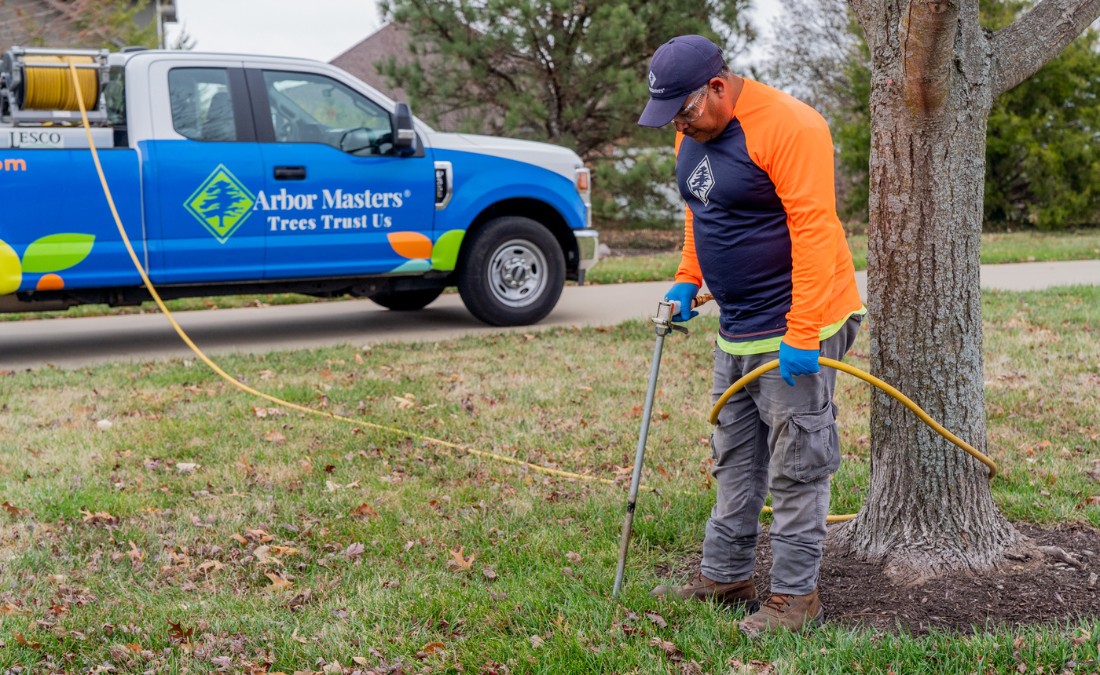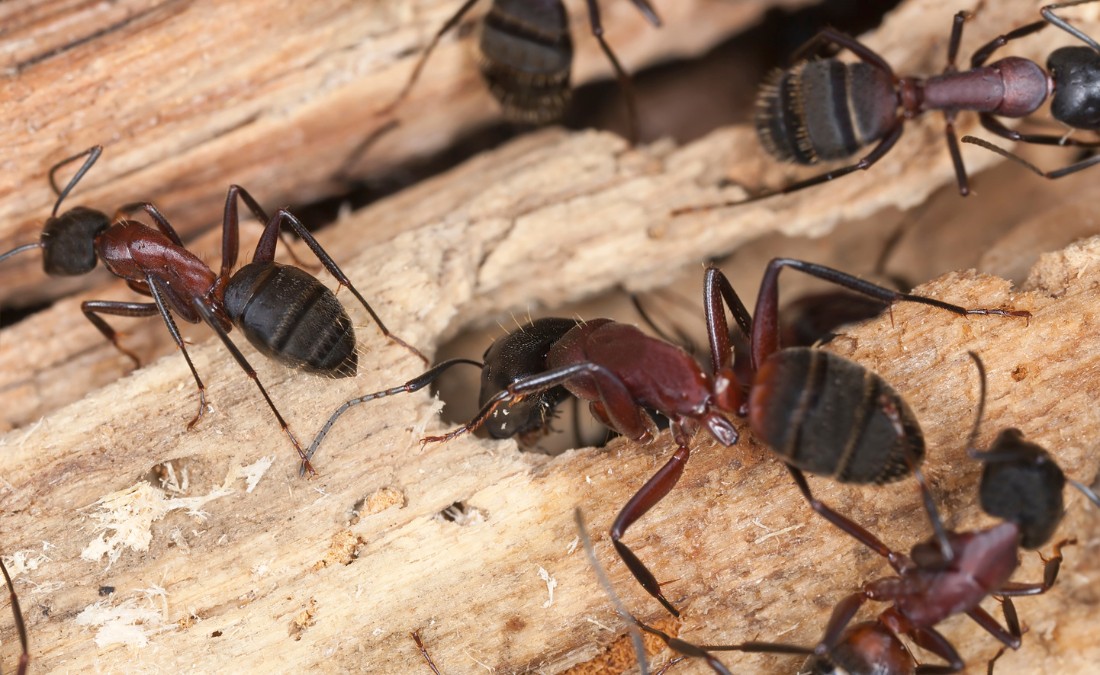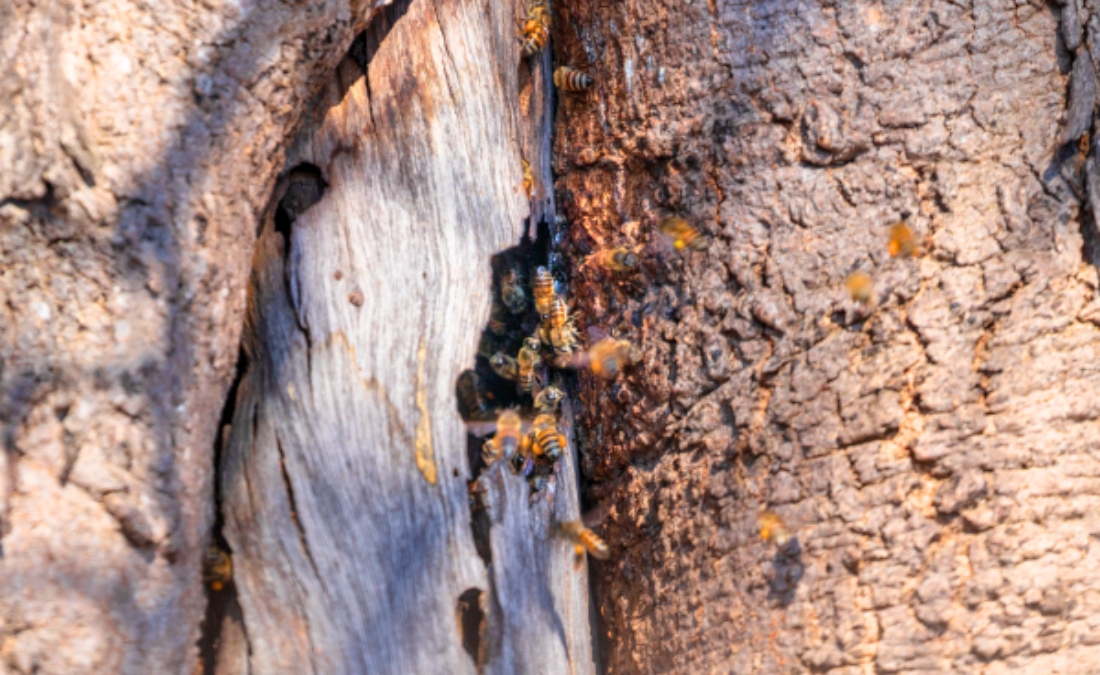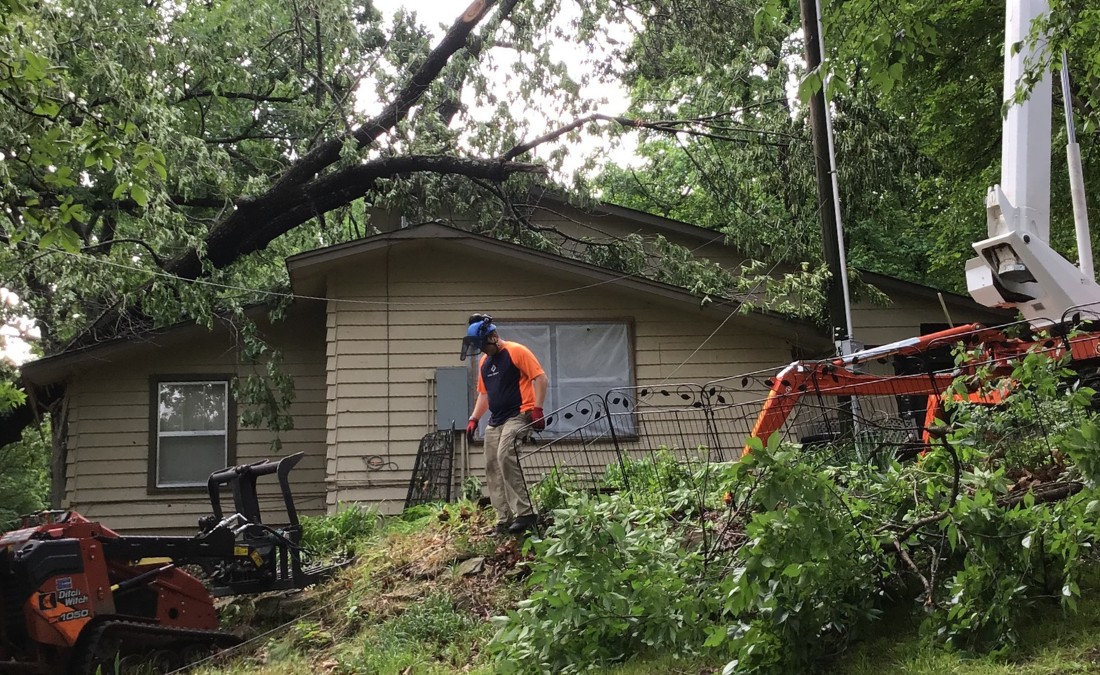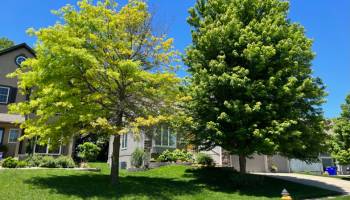Which Season Is Best For Tree Pruning in Wichita, KS?
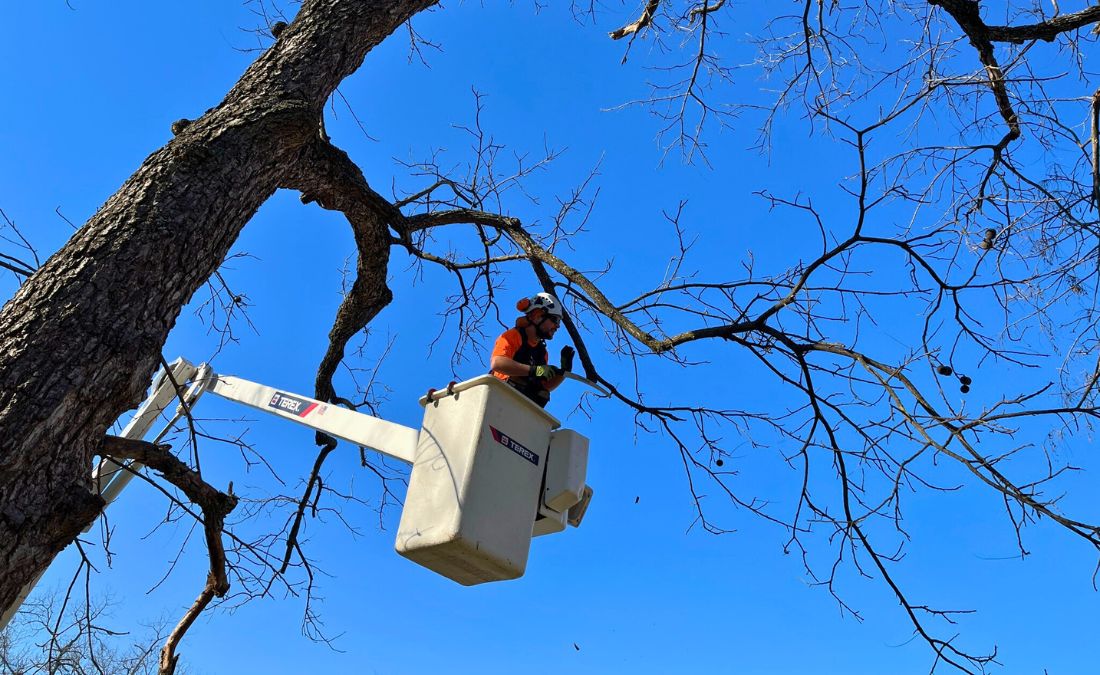
Tree pruning in different seasons has different goals and benefits. Arbor Masters explains the benefits of pruning your trees in different seasons in Wichita, KS
Pruning your trees at the wrong time can have serious consequences, from weakening their structure to inviting pests and diseases – or even causing them to die. Unfortunately, many Wichita homeowners unknowingly make this mistake, jeopardizing the health of their trees. Timing is everything when it comes to seasonal pruning. By understanding the best times to trim, you can keep your trees strong, vibrant, and your yard looking its best.
Key Takeaways:
- Winter is the optimal time for significant pruning work in Wichita. Trees are dormant, allowing wounds to heal with minimal stress and reducing the risk of disease spread.
- Spring pruning should focus on ornamental trees after they finish blooming (like dogwoods and redbuds) and removing winter storm damage.
- Summer pruning is best for improving canopy structure and removing weak branches before storm season, particularly for “bleeding” trees like maples that produce less sap in warm weather.
- Fall pruning should be limited to removing dead, diseased, or damaged branches to prepare trees for winter storms, as any new growth stimulated by pruning won’t survive the cold season.
Why We Prune Trees in Different Seasons in Wichita, KS
Proper pruning timing is one of Wichita’s most essential parts of tree care. Pruning the wrong tree at the wrong time can negatively affect its health. Understanding the basics of seasonal tree pruning in Wichita will allow you to make informed choices about when to hire professionals to prune.
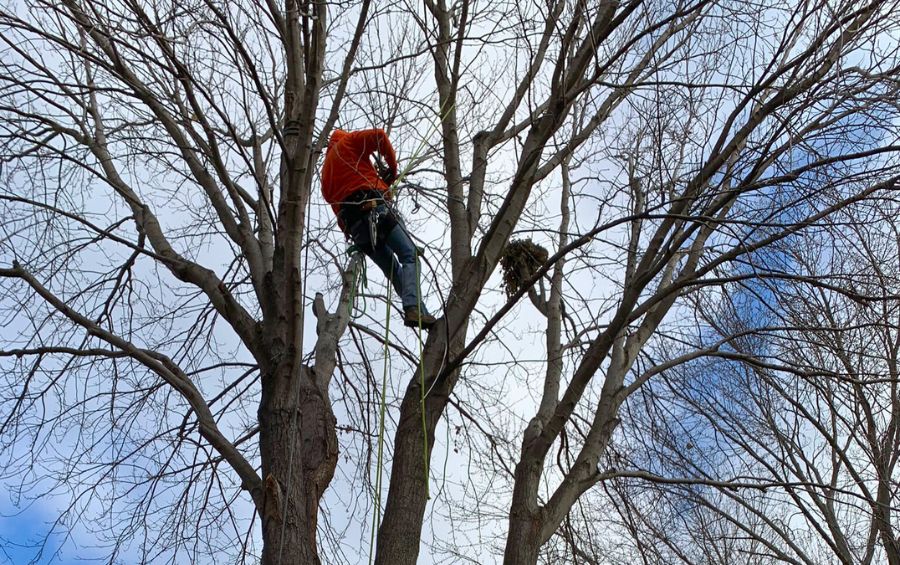
Winter: Best Time for Significant Pruning for Most Tree Species
While you may not pay much attention to your trees (or even want to be outside) during the winter, it is the best time to trim most tree species. Trees enter dormancy during the winter, meaning they aren’t actively growing and are saving energy for the upcoming spring.
Some of the benefits of winter pruning include:
- Less stress on trees
- Ample time for wounds to heal before spring
- Little risk of spreading diseases
- Better visibility of a tree’s structure while leafless
While we recommend winter pruning in most instances, it is not always best for every tree species. Some of the drawbacks of winter pruning include:
- Winter weather and ice storms may necessitate rescheduling
- Pruning may remove the flowers of your ornamental trees
PRO TIP: Winter is a critical time in your tree’s life, and there’s plenty we recommend for your tree, including pruning. Learn more about winter tree care in our previous article.
Spring: Best Time for Pruning Ornamentals
Spring is the time of the year when your trees leave dormancy and begin to grow. For your spring-flowering ornamentals, it is the season when they bloom, giving your landscape a big aesthetic boost. If you were to prune your spring-flowering ornamentals in the winter, they would lose their flowers. Some of the common spring-flowering ornamentals in Wichita include:
- Flowering dogwood
- Redbud trees
- Serviceberries
Once the show is over for your spring-flowering ornamentals, we recommend pruning them if they need it. Pruning will improve the trees’ appearance next year and allow you to shape them.
Spring is also an excellent time to inspect your trees for any signs of winter damage. Removing broken and damaged branches will increase safety and get rid of eyesores on your tree.
Keep spring pruning light and intentional, as this is when pests and diseases become more active in our area. Pruning wounds can serve as entry points for these threats. For example, avoid pruning vulnerable species, like elm trees, which are especially susceptible to Dutch elm disease.
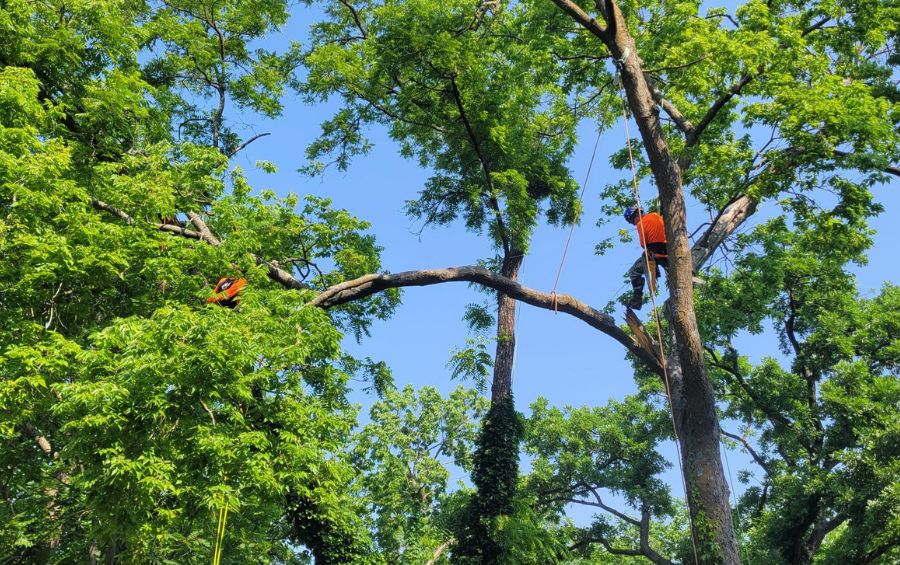
Summer: Best Time to Prune for Shape and Storm Resistance
In the summer, you’ll have a chance to see your tree at the peak of its size. This allows you to make decisions about pruning to shape the canopy and clean out excessive branches.
A tree’s canopy can end up crowded when too many branches compete for space, leading to several adverse effects for your trees, such as:
- Limiting Airflow Throughout the Tree: Airflow helps to dry a tree out after rain and lowers the risk of mold developing on the leaves.
- Preventing Light Penetration: Sunlight reaching the lower portions of your canopy also limits the development of mold and allows the lower leaves to help with photosynthesis.
- Competing Branches Rubbing Against Each Other: When two branches are too close together, they may rub against each other. This rubbing can injure the branches and expose them to insect attacks.
Summer pruning can selectively remove branches from the canopy, opening it up and resulting in a healthier, better-looking tree.
You can also quickly identify weak or dead branches during the summer and remove them as soon as possible. Summer storms can be particularly devastating in our area, and preparing your trees for the storms by pruning them will decrease the likelihood of storm damage.
The final benefit of summer pruning is handling pruning of “bleeders,” or trees that produce lots of sap. Pruning maple trees in the summer will limit the amount of sap you have to deal with and make the job less messy.
Whatever pruning you plan to do in the summer, keep it targeted and minimal. Summer is the season when many insects and diseases are most active, so only remove what is necessary.
Fall: Focus on Deadwood
Fall is not typically a time to do much tree pruning, but you can help prepare your tree for the winter with targeted deadwood pruning. Deadwood is a catch-all term to describe dead, diseased, or damaged branches prone to breaking during severe storms and high wind.
Removing deadwood in the fall will protect your property from damage caused by broken branches in the winter. Snow and ice can weigh heavily on branches and cause them to break, damaging other branches and anything else under the tree.
Aside from targeted deadwood removal, you shouldn’t prune anything else on your tree. Trees put out new growth in response to pruning during the active season. The new growth your tree creates in the fall will not survive the winter, wasting your tree’s energy and increasing stress.
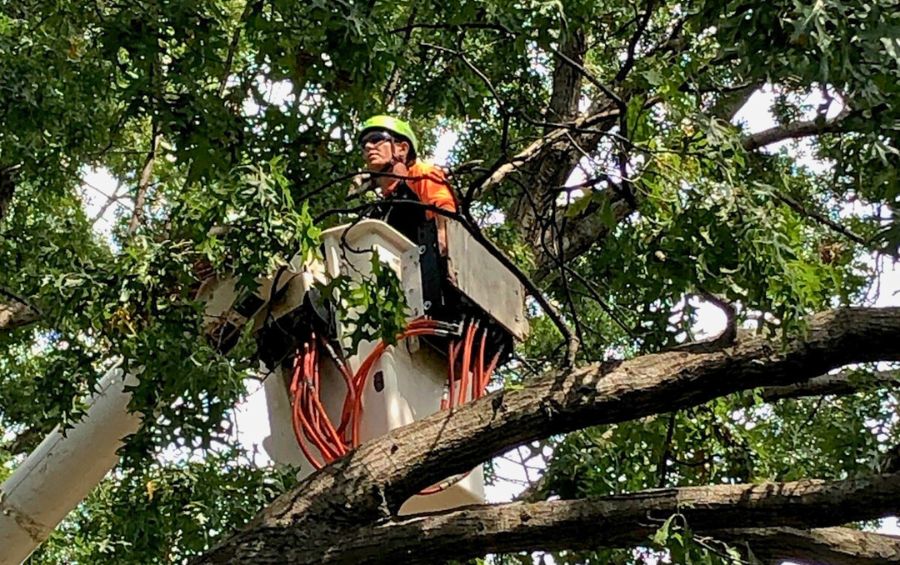
Frequently Asked Questions About Wichita Tree Pruning
Pruning can be complicated, with many homeowners not understanding the benefits or reasons why we do it. We’ve compiled some of the most frequent questions about pruning in Wichita. If your question isn’t here, we’ll happily answer it and more when we work with you.
What happens if I don’t prune my trees?
Some of the risks of never pruning your trees include:
- Poor aesthetics
- Overly long and heavy branches that could break
- A crowded canopy that develops mold
- A tree growing too large and interfering with structures and power lines
How much of a tree should you prune at one time?
Pruning should focus on removing only what is necessary to maintain the tree’s health and structure. It’s better to prune more frequently, taking fewer branches at each session, rather than making drastic cuts all at once. As a general guideline, never remove more than 25% of a tree’s canopy at a time. For the best results and to avoid stressing the tree, consider working with a professional arborist who can ensure proper care and balance.
Can I prune my own trees?
Most arborists do not recommend homeowners prune their trees. Pruning trees yourself is risky, and most homeowners lack the knowledge or equipment to do so safely and without harming their trees.
If I missed the proper timing for pruning, should I wait for the next year?
Depending on the species, condition of the tree, and the goal you have for pruning, it may be best to wait. Talk to an arborist if you aren’t sure if it is safe to prune your tree in a sub-optimal season.
Not Sure When to Prune Your Trees? Arbor Masters Can Help!
With so many tree species and their unique needs, figuring out the right time and method for pruning can be feel overwhelming. Getting it wrong can impact your trees’ health, but getting it right makes all the difference. That’s why it’s best to leave pruning to the experts.
At Arbor Masters, we know trees inside and out. No matter the size or species, we’ll prune your trees with care, leaving them healthier, stronger, and more beautiful. Call us today at 316-838-3111 or request a quote online.

Get the latest local news, tree care tips, special offers, and company updates directly to your inbox! It's easy to subscribe and there's no spam - we promise.
"*" indicates required fields

